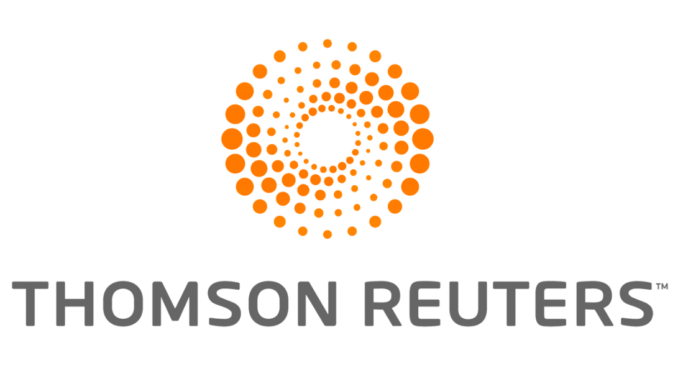
Thomson Reuters has partnered with UK-based data analysis company, Logical Construct, on an AI-driven document analysis offering for its institutional and financial services clients.
Although not specifically created to be a ‘legal AI’ application, Logical Construct, which has a focus on analysing structured data in the financial services sector, is now in effect conducting elements of legal AI doc review with Thomson Reuters for a range of major clients such as banks. The company’s Managed Legal Services arm, i.e. its Legal Process Outsourcing business, is the key partner of the tech company in this project.
In a statement, Thomson Reuters said: ‘[We] have teamed up with Logical Construct to help global financial institutions gain visibility into the key legal and economic terms and risks hidden within their legal documentation with a full-service contract data management solution.’
The integrated offering converts paper docs and images to searchable text, delivers pre-built and customisable data models to extract key legal and economic data, and provides dashboards to identify key agreements.

Trigg explains that initially his work in this area had been primarily manual, but as with other AI start-ups the idea of using natural language processing (NLP) to read documents and extract information was compelling. So, Logical Construct was born. It is now around two and half years’ old, with a main base in the UK and a team of developers in Barcelona.
‘We have a focus on capital markets, but there are a lot of ‘legal custodians’ of a contract,’ Trigg explains. ‘For example, in a bank the credit risk department will have an interest in a contract, so too the sales and trading department who are working with counterparties.’
Trigg adds that they make use of NLP and machine learning to identify and extract information ‘at a clause level’. Although, the objective is primarily to use the tech to identify certain types of structured financial data embedded in text and tables, rather than seeking to extract broader legal meaning from the clauses.
Trigg also stresses, when it comes to potentially huge and complex financial transactions, e.g. involving a major derivatives contract, the results of the analysis have to be perfect. In which case, there is then a human layer of review, which here is provided by Thomson Reuters’ Managed Legal Services group.
He also points out that they have been working with the US-based giant for some time now, but Thomson Reuters has only recently decided to make a formal announcement of the joint project.
The move to more openly publicise the new doc review capability comes at a time of growing demand from banks and other large financial institutions to deal with complex risk and regulatory issues. These often demand large scale review exercises of contracts, which naturally lends itself well to AI data-driven technology, such as NLP.
Thomson Reuters for their part added that among the drivers for the project was the fact that: ‘Financial institutions are being pressed to keep pace with a myriad of regulations including uncleared margin reform, the Packaged Retail Investment and Insurance-Based Products (PRIIPs) regulation, minimum record-keeping requirements under the Bank Recovery and Resolution Directive (BRRD) and Dodd-Frank.’
‘As a result, there is a growing need to better handle contract data and access the contractual terms buried in agreements. By joining forces, Thomson Reuters and Logical Construct are able to provide the technology and processes to help financial institutions build a holistic view of such data,’ the company added.
1 Trackback / Pingback
Comments are closed.